Have you ever gone to your local Wal-mart (or wherever, nothing against Wal-mart in general, after all I'm there several times a week for milk, toilet paper, etc) to get a favorite photo enlarged and been extremely disappointed when you get your print developed and find that the bottom of baby's chin is cut off or some other equally tragic mishap has occured? You might wonder some of the things in your original photo are actually missing in the enlargement. The reason is cropping. Cropping is the act of trimming part of an image in order to make if fit a specific proportion. If you notice a difference between your original and your enlargement, it is because the two do not have the same height to width ratios (proportions.) And in the case that your image is fed into a machine that has no personal interest in what your enlargement looks like and lacks the ability to reason, your image has been cropped without regaurd to preserving its most significant parts. Bummer!
So, I'm going to teach you about cropping ratios and help you know how to get an enlargement that you will love as much as your original (and one that is not missing any significant body parts.)
My camera, and most of your cameras, take images that have a height to width ratio of 2:3. So a 4x6 print will include all of the visual information that my original image has. (Darn, math really was important! Remember how to reduce fractions? 4/6 divided by 2 is 2/3 and since 2/3 is the original proportion, we know that a 4x6 print is exactly compatible to the original image.) Are you with me so far?
The most common and drastic crop comes when taking a 2:3 image and cropping it to an 8x10. If a 2:3 ratio was maintained, a photo with a height of 8 inches would have a width of 12 inches. This particular crop is going to take
two inches off of the short sides of the image.
A vertical example-
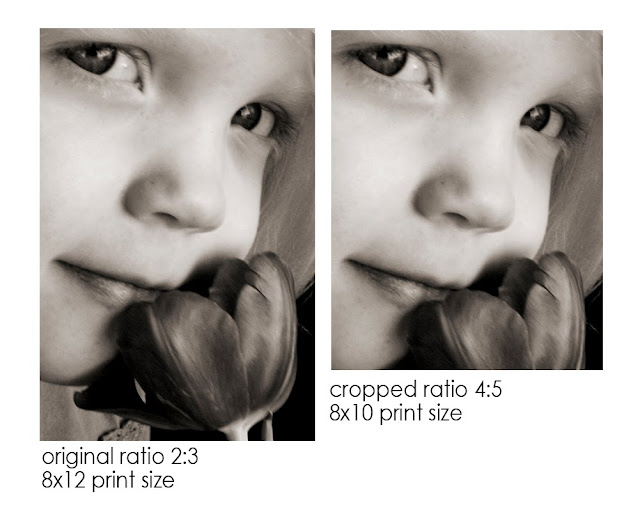
A horizontal example-
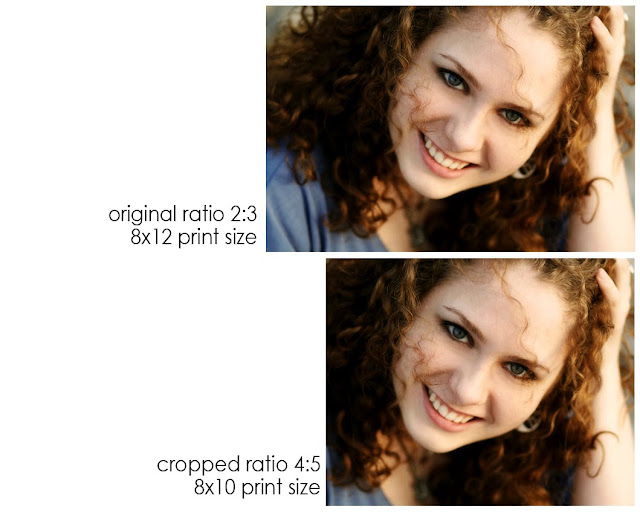
So, when you order a print, you must consider the change in the ratio and how that will effect your final image. When a client orders prints through me, I do all the considering for them. I make the adjustments that give the most pleasing image possible. Altough I try to allow enough room for variation in the original photo, there are times when a very tight shot will be less than great when it is altered. If this is the case, I notify the client about their order and offer an alternate size.
As for making your own prints, I'm pretty sure that most online lab services give you the option to adjust your crop before placing an order. (And if I remember right, so do those kiosks at Wal-mart.) You chose the size you want, then you see on the screen how the crop will look with the new proportions and you have the ability to move the cropping rectangle right, left, up and down to select the most flattering crop of your image. I highly recommend Mpix and this is a screen shot of what it's like to order with them...
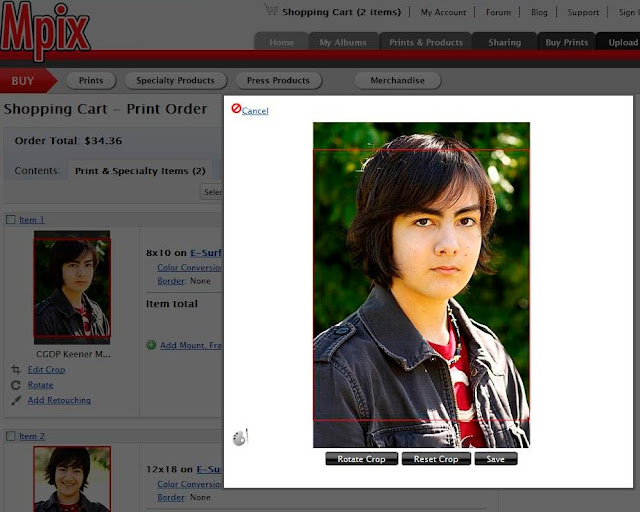
You can see a thin red lined box over the image. I may move that box up to include the eniter head of the subject, choosing to trim the torso instead. In this case, I think the photo is actually improved by cropping some of the jacket and putting the focus more on the face.
But sometimes, there are those tight shots that are just perfect as they are and can stand NO cropping. That is when getting a custom made frame is worth the effort and the money. (Getting prints of all sizes is easy- it's getting the frames that can be a challenge.) Take for example my family picture from 2008. My BFF Janet took this photo for me and I LOVE it just the way it is. You see that my family fills the whole width of the frame.
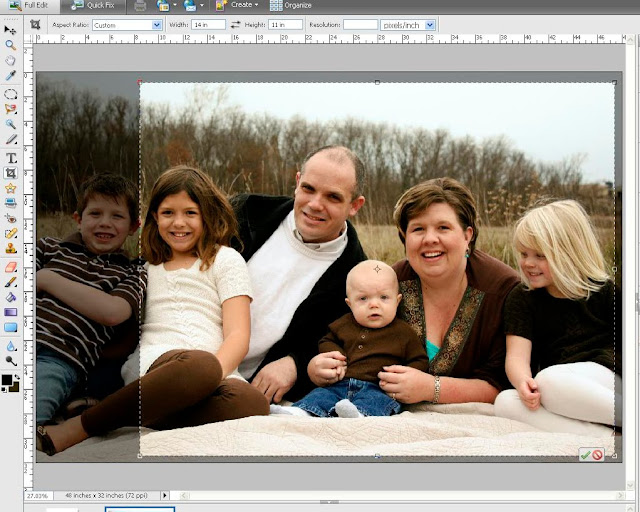
Since I didn't want to exclude anyone (Paul) by cropping to an 11x14, I ordered a 12x18 (2:3) framed print. And here it hangs in all its glory...
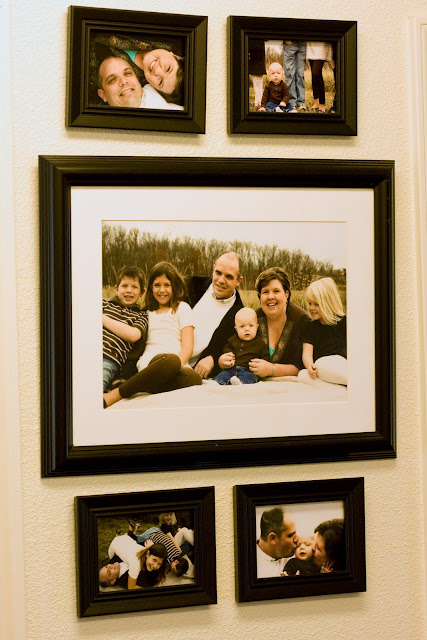
I'm almost done talking croping. I promise, just one more note... As a photographer, I find that I tend to crop everything just so right before I click the shutter. It's natural for me to compose it exactly as I think it looks best, so I find that the images with the 2:3 ratio are usually my favorites. However, for the convenience of the customer and because 8x12 frames have not caught on yet, I do my best to remind myself to give a little "breathing room" in the original image so that if the need to crop at a different ratio arises, I can do it without sacrificing a significant part of the photo.
Happy Cropping!
or Happy Not Cropping!
(whatever the case may be)










